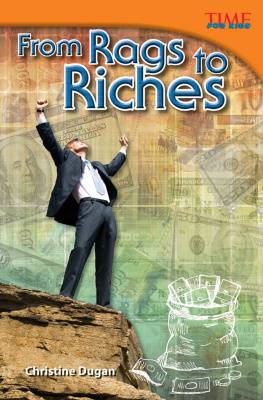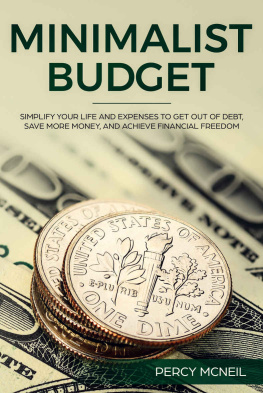
Christine Dugan


Consultants
Timothy Rasinski, Ph.D.
Kent State University
Lori Oczkus
Literacy Consultant
Rich Levitt
Certified Public Accountant
Based on writing from
TIME For Kids. TIME For Kids and the TIME
For Kids logo are registered trademarks of
TIME Inc. Used under license.
Publishing Credits
Dona Herweck Rice , Editor-in-Chief
Lee Aucoin , Creative Director
Jamey Acosta , Senior Editor
Lexa Hoang , Designer
Stephanie Reid , Photo Editor
Shelly Buchanan , Contributing Author
Rachelle Cracchiolo , M.S.Ed., Publisher
Image Credits:
pp.9 (background), 54 (left),
56 (bottom) Alamy; pp.37 (bottom), 50,
57 Associated Press; p.43 Corbis; pp.7, 45
Getty Images; p.8 iStockphoto; p.32 (right)
ChinFotoPress/Newscom; pp.23 (top), 36
Newscom; pp.34, 9 ( bottom), 23 (bottom),
38, 53, 55 (bottom) REUTERS/Newscom; p.23
(middle) ADC-DIFFUSION/SIPA/Newscom; p.52
Los Angeles Daily News/Newscom; pp.22, 2829
Timothy J. Bradley; p.6 Photo Researchers, Inc.;
All other images from Shutterstock.
Teacher Created Materials
5301 Oceanus Drive
Huntington Beach, CA 92649-1030
http://www.tcmpub.com
ISBN 978-1-4333-4909-6
2013 Teacher Created Materials, Inc.
Teacher Created Materials
5301 Oceanus Drive
Huntington Beach, CA 92649-1030
http://www.tcmpub.com
2013 Teacher Created Materials, Inc.
Synched Read-Along Version by:
Triangle Interactive LLC
PO Box 573
Prior Lake, MN 55372
ISBN-13: 978-1-68444-958-3 (e-book)

Table of Contents
Ways We Spend ................
Where Does the Money Go? .....
Making Money Matter ..........
Glossary .....................
Index .......................
Bibliography .................
More to Explore ...............
About the Author ..............

Ways We Spend
People spend money on everything from silly
socks to important medicines. Adults spend money on
basic needs such as housing, food, and transportation.
They also spend money on extras such as
entertainment and vacations. Kids buy treats
to eat, games to play, and things to wear. Kids
also use money for minigolf, amusement
parks, seeing movies, and other fun activities.
How do you spend your money? Where does
your money go?
Sources of Income
People are able to shop for things
because they have earned money.
Most adults earn money from a job.
The income they earn is paid to them
in exchange for their hard work.
Young spenders may not be old
enough to work fulltime, but that
doesnt mean that kids cant have
their own money. Kids can earn
money from a parttime job, such
as babysitting or mowing lawns. Some
get an allowance by doing chores around
the house.

How do we spend money?
What do we use money
to buy?
What
are other ways we
can use money?
There are lots of ways
you can earn extra
money on the weekend
just working around
your neighborhood.

Purchasing Power
People use different items when they spend money.
Some spenders use cash, which includes bills and coins.
Others use checks or debit cards . These take money
directly out of a persons bank account. Credit cards
let people spend money they may not yet have. All
these items represent money, even though they dont
look like bills. Sometimes, spending money without
using cash makes it more difficult to keep track of how
much has been spent.
Forms of Cash
Besides bills and coins, many different
kinds of objects have been used for money.
Some of these examples date back thousands
of years. Cultures around the world have
used beads, shells, or even cattle as a form
of money. Around
bc , small pieces of
silver were the first coins used.
Cowrie shells were
once used for
money in Africa.

Modern Minting
Early coins came in many different shapes.
Ancient cultures used bars, rings, or lumps of
metal. Today, coins are made at government
mints . Machines cut coins out of strips of
metal. An engraver makes a mold for each type
of coin so that they are all identical in size and
shape and have the correct images on them.
packaging pennies
at the United
States Mint

Life Cycle
of a Dollar Bill
The United States Bureau of Engraving and
Printing prints approximately 16,650,000 dollar bills
each day! The typical life cycle of a $1 bill is a little
less than five years. Once the money is printed, it is
shipped to the Federal Reserve Bank . The Federal
Reserve Bank then sends these new bills to different
banks. Banks distribute the money to people. Over
a short period of time, the bill becomes worn and is
returned to the Federal Reserve Bank.
The Art of Money
Take a close look at a printed bill and
youll find a work of art. First, an artist
draws or paints a design for a new bill. Once
approved, the design is handed over to a team
of engravers. The engravers carve the metal
printing plate. Its all done backward so that
when the bill is printed, youll be able
to read it.
Can you guess why a
$
or a
$
bill
has a longer life cycle than a




























